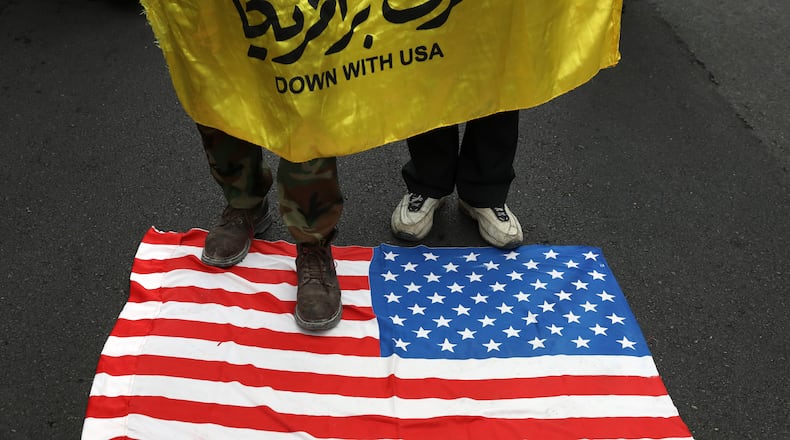Forty years ago, Jimmy Carter’s presidency effectively ended.
On Nov. 4, 1979, hundreds of Iranian students, stoked by the fires of religious fervor and outrage, stormed the U.S. Embassy in Tehran, Iran, taking dozens of American diplomat and embassy workers hostage and setting off a 444-day crisis that would end only after Carter had departed the White House and his successor, Ronald Reagan, took over the Oval Office.
»PHOTO GALLERY: Jimmy Carter through the years
Carter, a then-relatively unknown former Georgia governor, upset President Gerald Ford on Nov. 2, 1976, in one of the closest presidential elections in U.S. history. Carter brought a message of change to a nation still recovering from a long and costly Vietnam War and a Watergate investigation that resulted in Richard Nixon’s resignation, the first time in American history a president had resigned from office.
But Carter’s presidency would soon face severe economic inflation and oil and gas shortages at home, heightening a national malaise that he would call, in a July 5, 1979, speech he hoped would lift the national mood, “a crisis of confidence.”
However, only a few months later, he would see his presidency sink deeper into an abyss from which it would never recover.
Anger toward the U.S. had been growing in Iran throughout 1979 as Iran’s revolutionary government took hold, but it boiled over in October when the U.S. allowed the ailing Shah Mohammad Reza Pahlavi to be admitted into a New York City hospital for removal of a gallbladder and to undergo treatment for cancer.
After the shah’s exile from office, Ayatollah Ruhollah Khomeini, who had been living in exile since 1963, returned to his homeland on Feb. 1, 1979.
After the hostages were seized, the crisis dominated the headlines and news broadcasts, and it made Carter and his administration appear weak.
The nation’s image was further tarnished when an April 1980 Carter-approved mission to rescue the hostages ended in disaster. Eight U.S. servicemen were killed when one of Operation Eagle Claw’s helicopters collided with a C-130 transport plane in the Iranian desert.
On July 27, 1980, the shah died in the U.S., but Iranian revolutionaries still refused the hostages’ release. Reagan, a former California governor, would win the November 1980 election in a landslide.
On Jan. 20, 1981, the day of Reagan’s inauguration, the U.S. freed almost $8 billion in frozen Iranian assets, and the 52 hostages were freed.
The next day, Carter flew to Ramstein Air Base in West Germany to greet the Americans.
Today, the effects of the events that began 40 years ago continue to reverberate. On Monday, as they do every Nov. 4, hundreds of Iranians marched in Tehran, resuscitating a chant that became insultingly familiar during the hostage crisis, “Death to America.”
Credit: AP Photo/Vahid Salemi
Credit: AP Photo/Vahid Salemi
Also Monday, Iran announced it has doubled its number of advanced nuclear centrifuges, citing President Donald Trump’s withdrawal from the collapsing 2015 nuclear deal as the reason.
»MORE: In good humor, Jimmy Carter returns to Sunday school after fall
The announcement — which also included Iran saying it now has a prototype centrifuge that works 50 times faster than those allowed under the deal — came as demonstrators across the country marked the hostage crisis’ 40th anniversary.
Credit: AP Photo/John Amis
Credit: AP Photo/John Amis
For his part, Carter, 95, remains as American history’s oldest living ex-president and arguably its most active since he left office. He spoke for 40 minutes Sunday at Maranatha Baptist Church in Plains despite recovering from a broken pelvis from a recent fall, his third mishap in recent months.
About the Author
Keep Reading
The Latest
Featured




